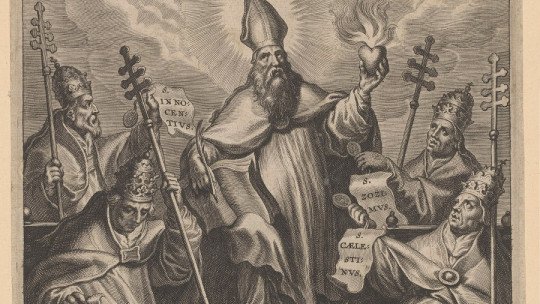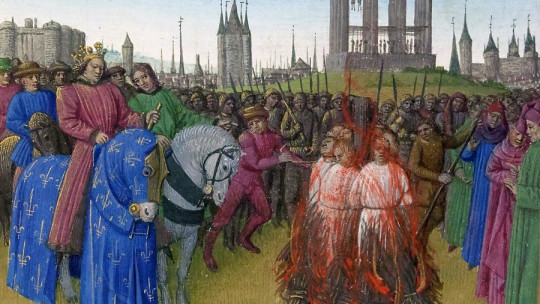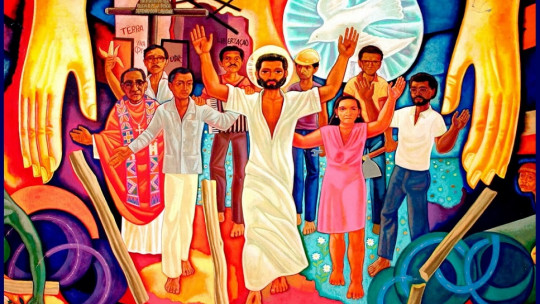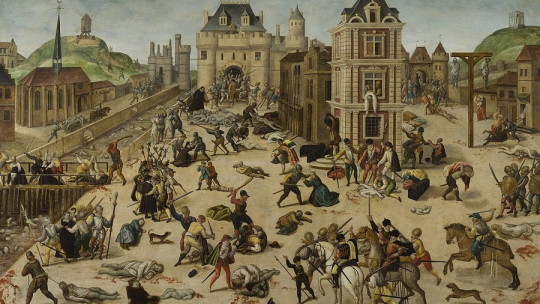Despite the similarity of some aspects of his theological doctrine with the Protestant branch, the Jansenists considered themselves Catholics. In fact, they didn’t even call themselves by this name; It was their enemies, which included the Jesuits and the French crown itself, who baptized them with the name of one of their promoters, the Dutch theologian Cornelius Janssens (Jansenio for the Hispanic sphere).
What made this doctrine so detestable, not only for the official Catholic Church, but also for political leaders? Why did Richelieu, Mazarin and the Sun King himself persecute the Jansenists and destroy the nucleus from which their teaching had radiated (the abbey of Port-Royal des Champs)? In today’s article, we summarize this theological doctrine condemned by the Church: Jansenism.
What is Jansenism?
As we have already pointed out, Jansenism is a theological doctrine framed within Catholicism, although various popes categorically rejected it and condemned some of its theses. In reality, and as we will see, the Jansenist theories of the salvation of the soul were dangerously close to those held by the Calvinists, which is why the Church did not view favorably the ideas of its followers.
What is Jansenism and what is it based on? Broadly speaking, we can say that it mainly includes the theories of Saint Augustine of Hippo (354 – 430) on grace and salvation, so, a priori, it should not involve anything denounceable in the eyes of the Church. official. In fact, The Jansenists subscribe to the theses put forward by the Council of Trent (1545-1563), as we will see, so, once again, it should be considered a Catholic current.
What, then, makes it so hated by the Church and by the rulers? What did Jansenism mean in the context of the time? We try to summarize it below.
The context: post-Trento Europe
Let us first place ourselves in the historical context. In 1517, the German monk Martin Luther (1483-1546) nailed his famous 95 Theses to the door of the Wittenberg Palace Church. The unstoppable movement of Protestantism began, which was going to mean an irreconcilable schism of the Church and that would promote, in 1545, the beginning in Trent of an ecclesiastical council that was to last two decades.
The Council of Trent was an analysis of the dogmas of the Catholic Church which, after the Protestant whirlwind, urgently needed a revision. In this sense, the Jansenists did not deviate from Trentine orthodoxy and, in addition, they took as inspiration one of the fathers of the Church, Saint Augustine.
Since Luther, the question of whether human beings really had free will, and whether, consequently, they had the power to save their soul through their actions, or whether, on the contrary, salvation was only possible, had deeply penetrated theological debates. in God’s hands. The Counter-Reformation machine (post-Trent Catholic propaganda) promoted the idea of human freedom and, therefore, his ability to move towards salvation through good actions.
The odius theologicus
This is of course the thinking of the Company of Jesus, founded in 1534 by Ignatius of Loyola. However, not everyone supported this idea. At the University of Leuven, an important center in our history, the theological currents had divided into two: on the one hand, the Jesuits and their free will; on the other, the so-called Augustinians, who, led by Michael Baius (1513-1589), were in favor of limiting human freedom in salvation, as Augustine of Hippo maintained.
This confrontation, known as odius theologicustranscended borders and drew in Europe two irreconcilable sides: Jesuits and Augustinians. The latter represent the seed from which the theory of Jansenism was to emerge, spurred by the theologian Cornelius Janssens (1585-1638), hence its name. But Janssens was neither the only nor the most important of its creators, as we will see.
The reformer: Cornelius Janssens or Jansenio
Cornelius Janssens (known in Hispanic circles as Jansenio) was a Dutch theologian born in the province of Utrecht, into a wealthy Catholic family. In 1602, a young Cornelius moved to Leuven to study at his university, just at the time when the two aforementioned sides were already inevitably at odds.
Soon, Jansenius is attracted to the teachings of Baius, inspired by Saint Augustine, and clearly takes sides with the Augustinians. He was joined by Jean Duvergier de Hauranne (1581-1643), another future theologian who would also become abbot of Saint-Cyran (a position for which he would be best known). The two young people become inseparable and leave for Paris, where, after attending the talks of the theologian Edmond Richer, they decide imbibe early Christianity and study patristic writings among them, of course, Saint Augustine.
This voracious reading of Augustinian texts led to an approach to the idea of grace as the engine of salvation, which brought the two friends closer to Calvinism. But, before continuing, let’s briefly explain what this theory is based on.
Grace as the (only) engine of salvation
Catholic Christian doctrine establishes free will for human beings, so they are responsible for their actions, which can be directed towards evil or good. Luther already criticized this idea, following the abuses that were committed when “buying” indulgences for the salvation of the soul. So, The reformer stipulated that only God decided who was saved and who was not and nothing that human beings did (forever stained by original sin) could change the divine decision.
Along these lines, Jansenio and Duvergier took up the idea of grace as the only engine of salvation. Divine grace was granted by God in advance, so God knew which souls were going to be saved and which were not. In this doctrine, therefore, there was no place for the free will defended by the Jesuits and by the official Catholic creed or, at least, it was not the same degree of freedom.
Both Jansenius and Duvergier considered that human beings had lost this precious freedom with original sin from which a delectatio terrestris or a joy for earthly things (i.e., for sin).
To access the delectatio coelestis (that is, the way of heaven or Good) was necessary, therefore, effective grace of God, the only possible help to redirect human beings towards their salvation.
Rise and fall of the Jansenists
The great work of Jansenism is Augustinus, prepared by Jansenio for no less than fifteen years; work that the theologian never corrected, perhaps for fear of being persecuted. The book was published posthumously, in 1640, when its author had already been dead for two years. The papacy soon attacked the work.
For his part, Jansenio’s intellectual companion, Duvergier, abbot of Saint-Cyran, had contacted the Cistercian abbey of Port-Royal des Champs, where Angélique Arnauld, a noblewoman of the Arnauld family, was abbess, a lineage that quickly sympathized with the doctrine of Duvergier and Jansenius. The abbey since then became the epicenter from which Jansenist thought radiated and, from there, it spread to the rest of France.
In fact, Jansenism became very popular among the French aristocracy of the 17th century, to the point that it became a mere fashion. Meanwhile, the French rulers did not view the expansion of the doctrine favorably.
Richelieu first and Mazarin later persecuted the Jansenists, seeing in them a danger to the stability of the state. When the doctrine practically became a political faction, Louis XIV gave the final blow; In 1712 he destroyed the abbey and cemetery of Port-Royal des Champs and, with them, the Jansenist center par excellence. Mortally wounded, the Jansenio and Duvergier current still survived for a few years, only to end up disappearing. Its list of followers includes illustrious names, among them none other than the philosopher and mathematician Blaise Pascal (1623-1662).









